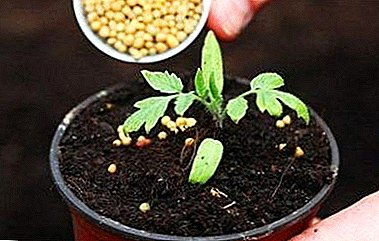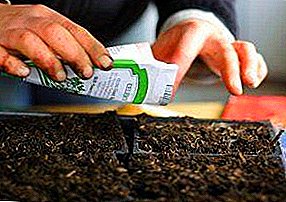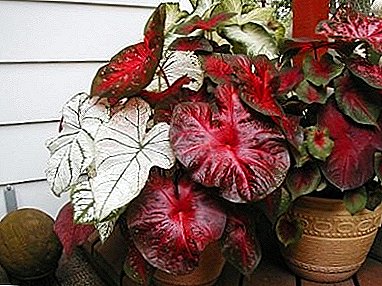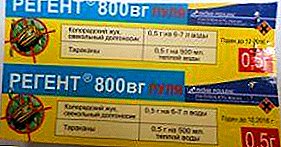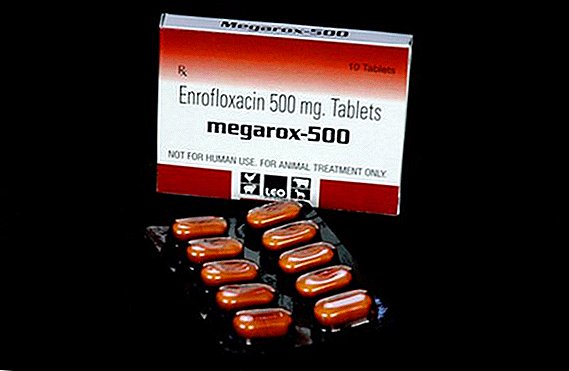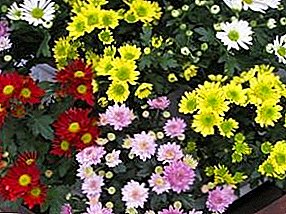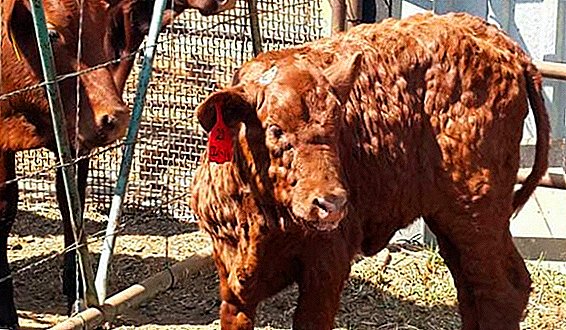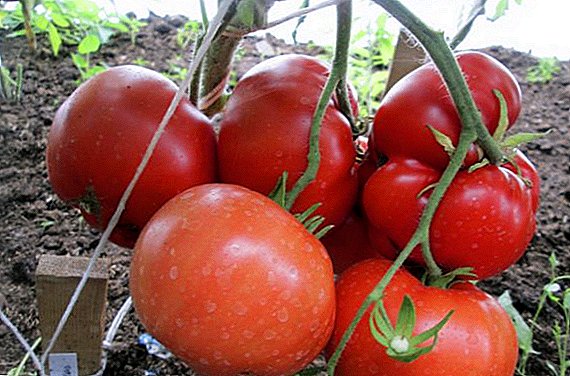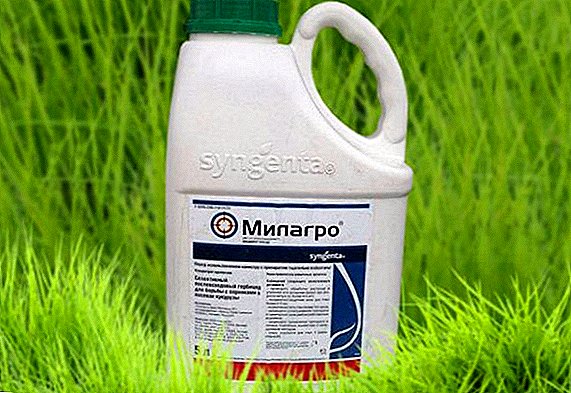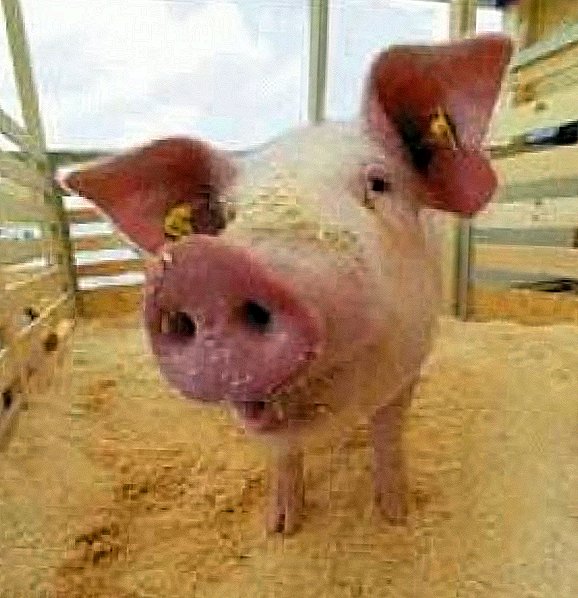
With room, resources and enthusiasm, it is very easy to raise pigs at home.
However, even if you made such a decision, first of all you will have to take care of what to feed your pets. After all, although this animal will not go through the feeds offered to it, if you want to get a high result, you will have to make a diet very carefully.
In the article below, we will examine in detail what feed is best suited to pigs, and what method of fattening can achieve the highest productivity.
We will also tell about the difference between the diet of small pigs, adult individuals and sows.
Peculiarities of feeding pigs: products worth using for this
Habitually pigs are fed food waste and cooked root vegetables. In general, such food is acceptable for these animals, but you will not be able to quickly and efficiently raise an individual. Therefore, it is recommended to use various technologies of intensive feeding, which include a balanced feed and various vitamin supplements.
In any of these cases, it is worth considering the peculiarities of the body of pigs. The fact is that these pets have a single-chamber stomach, and for this reason, unlike cattle, they digest fiber containing feed much more difficult.
In this regard, consisting of succulent greens or feed should be only a small percentage of the total diet of pigs, mostly it is worth using concentrated feed. The latter are easier and best absorbed by the body of animals, positively affecting how it will gain live weight.
What type of feeding to give preference, each breeder decides independently, although there may be two main options:

- Traditional wet feeding, which involves the use of mash.
In this case, they use all sorts of food waste, vegetables, specially boiled potatoes, grains and grass (both fresh and finely chopped hay).
- Dry feeding of pigs, which is based on the use of a variety of crushed grain mixtures. TO
They also add pea flour, cake, vitamin and mineral supplements.
In this case, it is very important to give animals a large amount of water, otherwise they will very seriously suffer from constipation, weight gain will slow down.
Most modern pig producers consciously prefer the second method, which has proved itself to be more labor-intensive and efficient.
First, you do not have to cook the pigs several times a day and carry them into the mashed barn in heavy buckets.
Your only work will be to pre-crush grain, mix it with all the additional components and pour the required amount into the trough for your pets.
Secondly, with such feeding, there will be practically no stink in the room, and the manure itself has a faster ability to decompose into organic components, that is, to become fertilizer for plants.
Yes, and as already noted, such feeding is much better reflected in the growth of small pigs, giving the opportunity to get meat in a very short time. Thus, if you do not need pigs as a waste consumer, the option of feeding dry ingredients is more beneficial in all plans.
Discussing the features of the vitamin complex
Like a person, for normal growth pigs require a full-fledged diet, not devoid of vitamins. We think no one would be surprised to learn that the lack of any vitamin in the animal's body can cause a decrease in immunity, deterioration in the growth of animals, their fertility, and in rare cases - of death.
But do not think that the source of vitamins can only be special supplements. They can be obtained from the usual products, the first place which should be taken green fodder. They are rich in carotene and the most important groups of vitamins.
If in the summer the grass and other greens can be given fresh, then for the winter it is worth preparing as a silo. Hay can also be given, but it loses most of the properties of green grass.
A good source of vitamins needed for pigs is needles and dried nettle.
It is very important to add to the diet and red varieties of carrots.
Good use of the general condition of the body and the use of food, beer or bread yeast, which can fully satisfy the body's need for vitamin B. A priceless source of vitamins are all dairy products, and therefore giving fresh milk is especially important for young individuals.
In the winter period of time, when animals can use the resources of their bodies to withstand the cold, food should be especially rich and healthy. Therefore, you can use special vitamin supplements, including fish oil. It is among the most popular sources of vitamins of groups A and D.
Also, special concentrates of vitamins A and B are often used in animal husbandry.
What foods can harm pigs and how to feed them properly?
Many consider pigs omnivorous. In part, this is true, but still there are a number of subtleties that should be considered when feeding these animals:

- Grain is better to give these animals in a ground form. Whole pigs will also be eaten, but it will not be completely digested, as the animal will not be able to fully experience it.
It is also advantageous to use ground grain from an economic point of view, since in this form the costs will be minimal and the animal will be full.
- With traditional feeding, potatoes are the main staple food of pigs. However, giving it to animals just like that is not worth it raw, as it can harm them.
This root must be boiled, after thoroughly washing. Also, the water that remains after cooking potatoes is not recommended for use in feeding.
- Giving root vegetables in raw form is possible only as a vitamin supplement in small quantities. And yet, one potato should not be used, it is better to mix it with beets, turnips. And in large quantities such products are given only in a welded form.
The spoiled pig products also react very negatively.. Especially carefully you need to refer to the silo, not allowing it to freeze or rot, mold.
All this can cause the development of bacterial and viral diseases in an animal, there is a possibility of infection through meat and in humans.
Products that should always be included in the diet of pigs
When feeding pigs it is very important not only to choose the right products, but also their quantity.
If you give the animal too large portions - this will in no way lead to a rapid weight gain, the food will still remain in the trough.
For subsequent feeding, the leftovers should not be used, since spoiled food will not benefit the animal. So that the products do not disappear, these remains can be fed to ducks or turkeys, such food can also come to taste to chickens.
It is imperative to add grain to the diet of pigs. However, despite the fact that they are rich in carbohydrates, they do not have enough protein. In this regard, it is necessary to make food more diverse, adding to it the grains of legumes, and fodder yeast, and skim milk.
Useful for pigs will be meat and bone meal or fish meal, cake, reverse.
In general, for those components that can replenish the products of the body of the animal, they can be divided into the following groups:

- Components that are able to provide the body with animal energy. They are found in grains, corn and fats.
- They contain large amounts of protein soybean, rapeseed, sunflower flour, meat and bone meal, blood meal and fish meal, peas, reverse, sweet lupine, beans, yeast.
- Succulent feeds such as potatoes, cabbage, beets and herbs (silage). However, in spite of all their usefulness, they are difficult to digest; therefore, juveniles should be given a juicy feed with caution.
- Other components. In this group it is customary to include various types of food waste, waste from the brewing industry, meat processing plants.
Modes of feeding pigs and the differences between them
- Feeding "plenty." In this case, small piglets are given constant access to food. Troughs are cleaned 2 times a week to prevent coarse comas from old feeds from accumulating in them. Their piglets will not eat anyway.
Such a system is more suitable for young individuals, it is not recommended to use it for adults.
- "Normalized" feeding. In this case, food pigs give several times a day. At the same time, the amount of food should be such that the animals can empty the trough even 1-2 hours before the next serving of food.
This type of feeding is mainly used for feeding sows and piglets that are growing.
- "Limited" feeding pigs. The essence of such a system is to give the piglets a little less food than they could eat. At the same time, you can either really give less feed, or you can give less nutritious food, giving the piglets rough food.
If such feeding is used for fattening piglets, but the meat obtained from them will be lean. Also, this type is used for pregnant sows, so that they do not gain a lot of fat.
Feeding regimes are not all you need to know about pig feeding. It is important to pay attention to exactly what products animals need at different ages. About this below.
It is also interesting to read about pig meat breeds.
Diet for different ages of pigs: components and their quantities
An important aspect of feeding pigs is not only the selection of the right foods, but also the systematization of meals. In particular, it is best to give food to animals at the same time, changing the number of receptions depending on their age:

- Pregnant sows are fed only once a day. At the same time, it is very important to add rough foods to their diet.
- Single and nursing sows are fed more often, twice a day.
- Pigs that were removed from the sow should be fed at least 3 times a day. Also often feed those pigs who are on the rearing and fattening.
Fatted pigs can be given regular feeds twice, and rough feeds can be used for the third one.
Dairy pigs and their feeding
To teach small suckling pigs to feed is already from the fifth day, since from that moment their teeth begin to be cut.
Best of all, the dental system and salivary glands develop when they use toasted grains of peas, wheat, corn, or barley.
However, they may have gastrointestinal diseases from feed, so do not forget to give them acidophilic sour milk.
Combined feeds with special premixes for piglets are gradually added to the ration, or chalk, bone meal and coal are used.
On the 10th day, they are already allowed to give a little shabby carrot, later it can only be finely cut.
Over time, it is allowed to include in the food a little beet, pumpkin and combined silage, but very small amounts. Upon reaching three weeks of age, the pigs will be able to fully digest and boiled potatoes.
Take away from the uterus piglets is important to 1.5 months of age. By this time, they need to learn how to fully eat independently, less and less admitting them to their mother.
Also, sow important to transfer to dry feedthat will cause cessation of lactation. About how many times to feed piglets weaned, we have already spoken. And in the diet they need to include the following products:
- Mixtures of concentrates.
- Milk (preferably skimmed).
- Juicy and fortified feed - carrot, hay, silage.
- Minerals.
How to properly feed the gilts?

Feeding, or rather growing, of gilts is a very important task.
The fact is that during this period, they just formed the main bones, as well as muscle tissue, which later became the basis for laying off fat.
In the summer, it is rather simple to keep them in the pasture, feeding them with young grass, and adding to the diet a little kitchen waste and vitamin concentrates.
You can feed them with something similar to the soup: steamed two hours before feeding grass mixed with warm boiled potatoes and concentrates. During this period, the pigs should gain from 20 to 50 kilograms.
How pigs are fattened for slaughter: the main aspects of the required diet
When the pigs reach a weight of 50 kilograms, they can be actively fed, so that they gain not only body weight, but also fat mass. It lasts 3 months and during this period the pigs should be fed into the diet as much as possible nutritious foods. At the same time, it should be borne in mind that different foods affect the quality of meat in different ways:
- If you give fish waste - about meat will pull the fish.
- For bacon pigs, it is important to give dairy products, which give the meat a pleasant aroma.
- Loose and tasteless pork will be when the animals give a lot of potatoes, wheat bran, corn and buckwheat.
- Vegetables make fat flabby.
- Soy and cake reduce the quality of pork.
Feeding adults - boars and sows

The boar is very quickly gaining fat mass, so the food he needs is easily digestible. Experts recommend 75% of the diet boar from concentrates. Another 10% of the diet should be supplements that are of animal origin, and various succulent feed.
Legumes are also important for the normal metabolism of the animal, so their particle in the entire diet should be at least 5%.
Wheat bran, barley flakes, oats, beets, carrots and skimmed milk are the main products that boar needs to provide. To make the whole diet as balanced as possible, do not forget about vitamin supplements.
The main rate when feeding sows in the period of gestation should be done on high-quality and diverse feed. This may be green grass and silage, and various root crops.
For a variety of different concentrates, mineral supplements, herbal and meat and bone meal.
It is very important that the sow does not have a calcium deficiency, because in the future she will still have to bear the young. Therefore, it is very important to include ordinary chalk or limestone in its diet.
Also, it is unacceptable that in the first months of gestation, feeding is unnecessarily abundant, since this may cause the death of the embryo. Feeding in the second half of gestation should be with minimal added succulent feed. The total amount of feed in the last 3 days before farrowing should be reduced by 30-40%.


